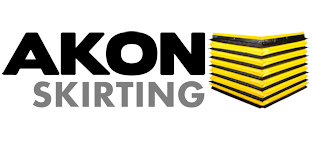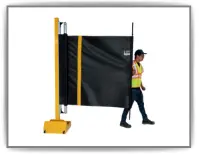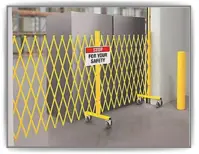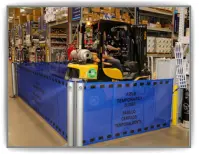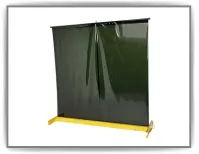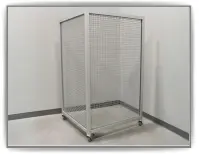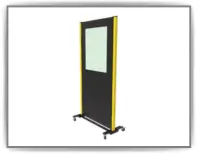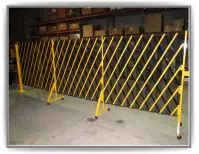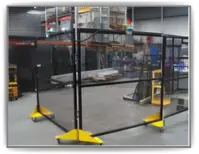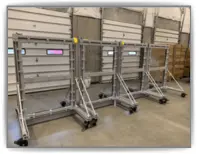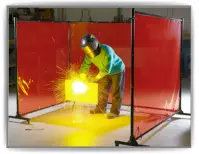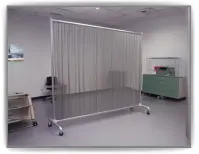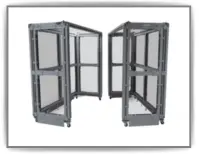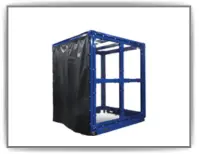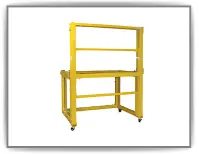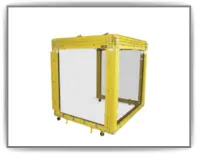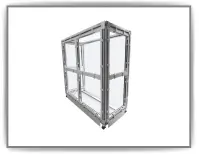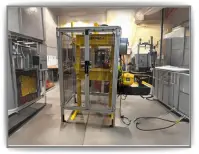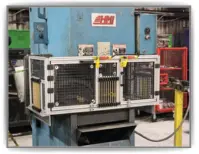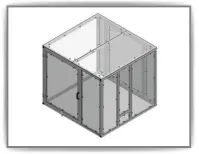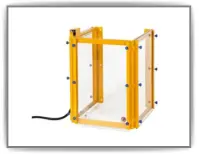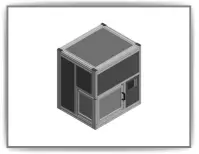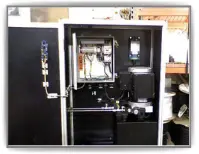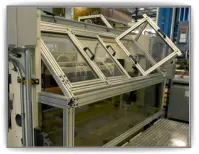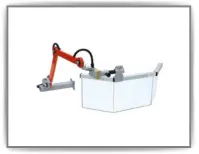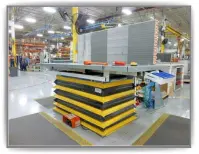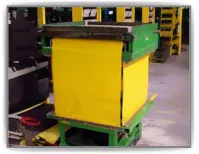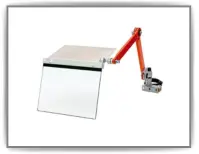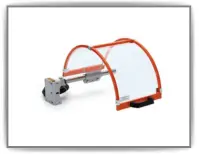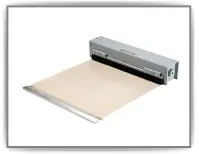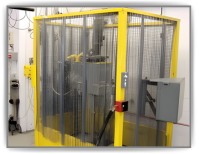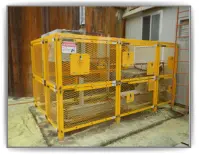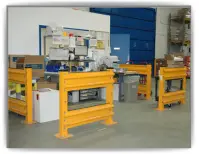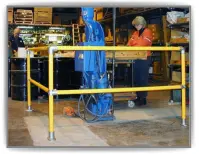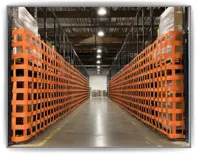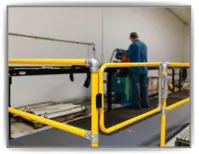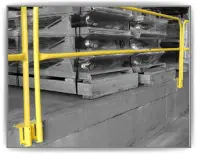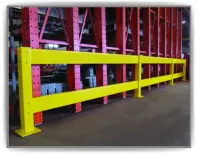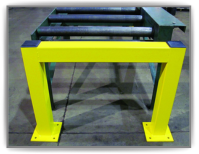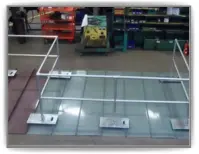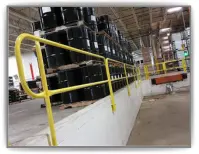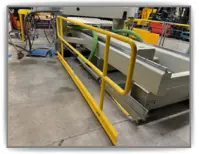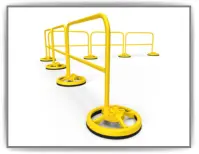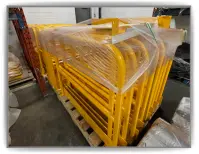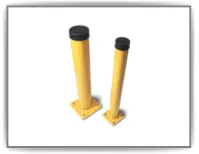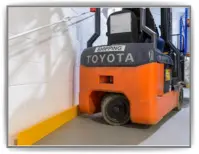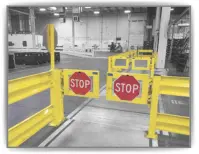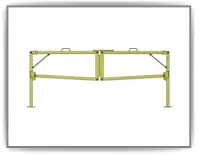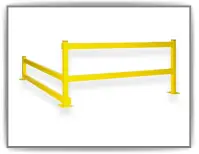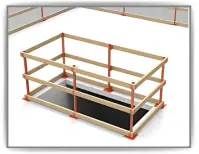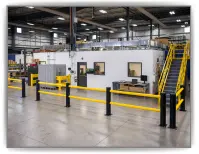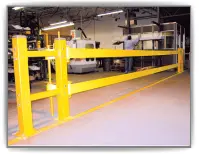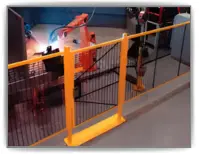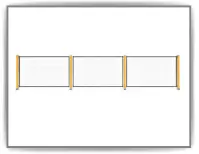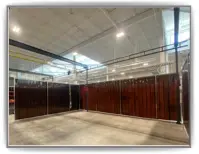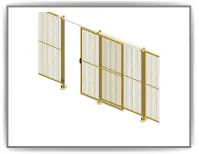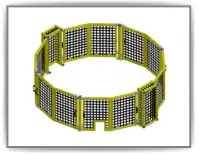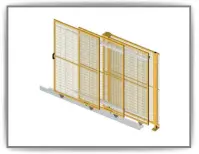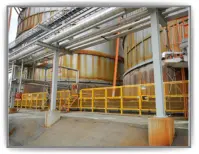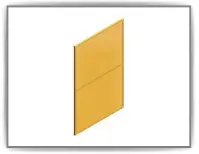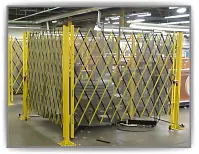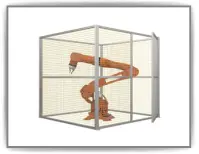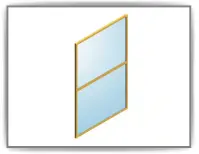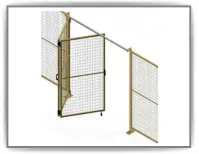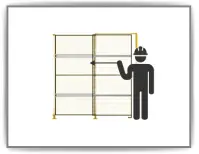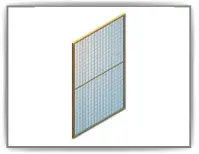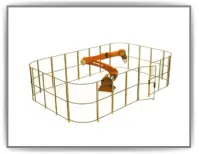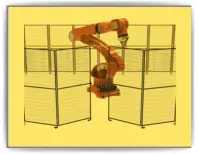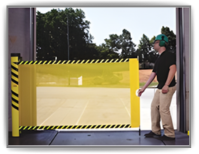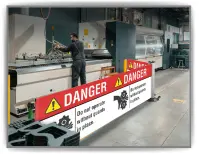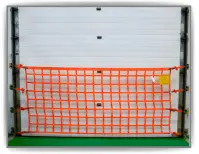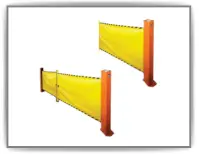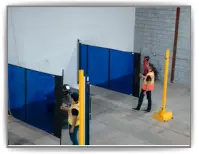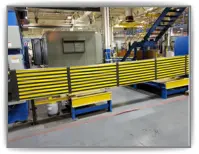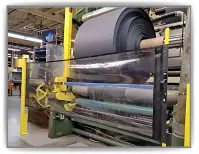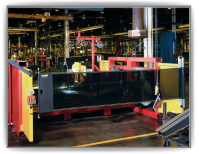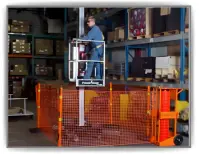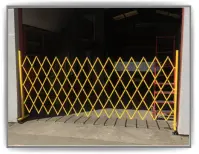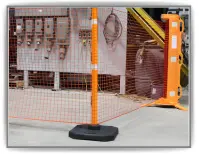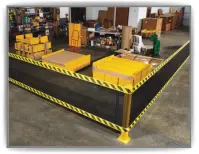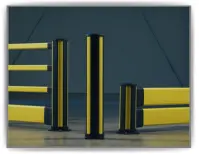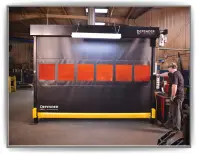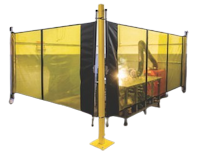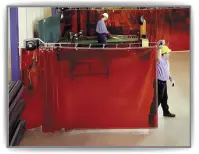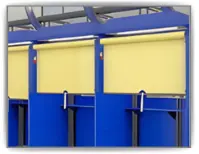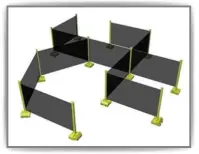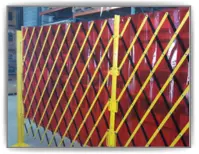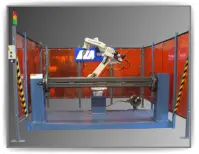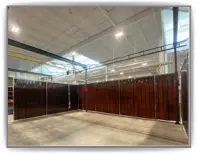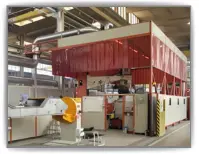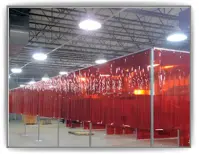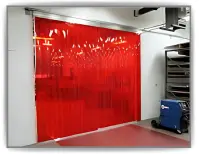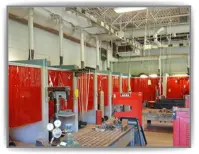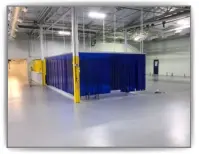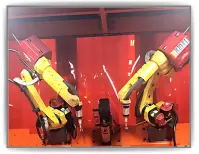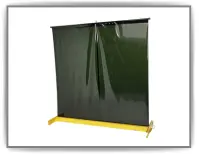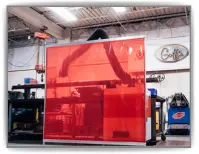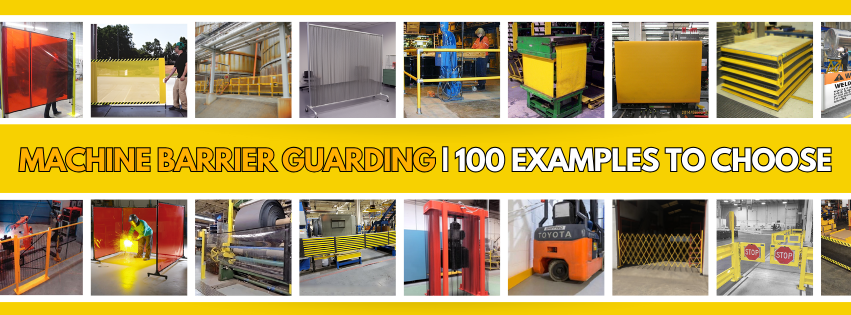
Portable
Enclosures
Guard Rails
Safety Gates
Self-closing swing gates offer a way to control entry in industrial settings. These gates block off hazardous areas and machines that shouldn't be accessed. Safety gates use a spring mechanism to close immediately after someone goes through. This keeps areas open but limited to only those who are allowed to enter.
Steel Fixed Guardrails
Steel Fixed Modular Guardrails are an ideal choice, as they blend style and purpose while matching the design of buildings. The system comes in straight and curved forms, and all parts are galvanized. The system is put together on-site to make sure it fits well and looks consistent during installation.
Drop-In Safety Railing
The drop-in safety railing system provides an easy and effective way to prevent falls. The panel design makes it easy to quickly install and remove railing pieces. Engineered parts provide a good fit, and the easy inserting process includes a secure locking system for added safety.
Fencing - Rigid
Fencing - Roll Up
SB9000 | Clear Retractable Barrier
This clear guard is perfect for places with limited space or where standard big, stiff guards would be awkward. This industrial retractable barrier keeps consistent tension, much as an old-style window shade twisted on its side, making pulling out and retracting simple.
Side to Side Retractable Barrier
Can be easily moved when not in use because it rolls up onto a roller tube. This makes it perfect for places with high cranes or where materials need to be moved. It is often used in robotic weld cells as a visual barrier and makes it easy to rearrange the work cells.
Portable Safety Zone
Portable Safety Zone Retractable Orange Fencing is lightweight, and its slim design allows for easy transport, setup, takedown, and storage. The system includes a mobile frame, orange fencing, posts, base pads, and magnetic clips. A unique locking system ensures a sturdy barrier.
Welding
SB-5000 | Roll Up Welding Curtain
Roll-up welding screens protect against UV light in a way that can be changed to fit the needs of the work cell. They take up less room than set cells, keep things from getting crowded, and let overhead cranes get to them. There is one post that can link up to four curtains.
Wire Partition
A simple and effective way to keep people safe from automated, mechanical, or dangerous places and equipment is to use wire partitions. These walls are used to separate danger zones. The flexibility of the system makes it easy to connect entry doors or openings for moving things to the system's controls.
Welding Hood Strip Curtain
Made to contain and regulate welding fumes, so offering your staff a safer, cleaner workplace. These heavy-duty tinted PVC strips effectively capture dangerous gasses and stop them from dispersing to other locations, therefore resisting the stresses of industrial situations.
Summary
Machine Barrier Guarding Solutions
Need a safety barrier? Here's the breakdown:
| Category | Description | Portability | Application | Access | Configuration | Durability | Considerations |
|---|---|---|---|---|---|---|---|
| I. Portable Barriers | Moveable barriers for various hazards. | High (designed for easy relocation) | General access control (crowd control, temporary closures), weld flash & sparks (portable welding screens), impact protection (shields), electrical hazards (insulated barriers), etc. | Frequent to Infrequent | Flexible (can be reconfigured) to Fixed (some have set shapes) | Low to High (material and construction vary widely; consider impact resistance needs) | Best for temporary or changing needs. Evaluate weight and ease of handling. Consider visibility requirements (e.g., bright colors, reflective tape). |
| II. Enclosures | Fixed barriers surrounding machines or processes. | Low (generally bolted or otherwise affixed) | Machine guarding (preventing contact with moving parts), noise reduction, containment of parts/debris (e.g., from machining), protecting personnel from automated processes. | Infrequent to Frequent | Fixed (designed for a specific machine or area) | Medium to High (robust construction for long-term use) | Ideal for long-term hazard containment. Consider ventilation needs. Ensure compliance with relevant safety standards (e.g., OSHA). |
| III. Guard Rails | Barriers for fall protection and traffic control. | Low to Medium | Fall protection (edges, platforms, loading docks), pedestrian/forklift separation, traffic flow management, protecting equipment from impacts. | Infrequent to Frequent | Fixed (posts are typically anchored) | Medium to High | Essential for elevated work areas. Consider material (steel, aluminum, polymer) based on environment and impact resistance needs. Ensure compliance with fall protection regulations. |
| IV. Fencing - Rigid | Sturdy, fixed barriers for perimeter guarding and access control. | Low | Perimeter guarding (restricting access to restricted areas), machine guarding, robotic cell protection, creating secure storage areas. | Infrequent to Frequent | Fixed (modular systems allow for some customization during installation) | Medium to High | Good for long-term security and hazard containment. Consider visibility and airflow requirements. |
| V. Fencing - Roll Up | Retractable barriers for flexible access control. | High | Access control (closing off aisles, temporary work zones), aisle blocking (forklift traffic management), welding protection (retractable welding curtains). | Frequent | Fixed (mounted to posts or walls) | Low to Medium | Best for areas where frequent access is required. Consider material (mesh, solid) based on application. Not as robust as rigid fencing. |
| VI. Welding | Specialized barriers for welding safety. | High to Medium | Weld flash & sparks protection, UV radiation shielding, fume containment (with appropriate ventilation systems). | Frequent | Flexible to Fixed | Low to Medium | Crucial for protecting workers from welding hazards. Ensure proper ventilation for fume control. Consider the specific welding process and potential hazards. |
Portable barriers aren't the strongest option even if they are light and easy to move. For temporary uses or shifting configurations, like rapidly managing crowds or building makeshift welding screens, they're fantastic. Consider how often you will need to move moveable obstacles, what hazards they should guard against, and how much force they can handle.
Enclosures are robust, fixed barriers surrounding machinery to keep people and parts inside and noise down for long-term safety. Consider the ventilation quality of shelters, their maintenance ease, and whether they satisfy safety requirements. Most guard rails are rather robust and fastened in place.
Consider the height required of guardrails, their construction, and if they satisfy fall safety regulations when selecting them.
Rigid fencing is used for maintaining places safe, such as property lines or robot cells, especially. It is robust and not falls down. Consider how secure you want it to be, how clear you want it to be, and whether you need gates or entrance panels.
Roll-up fence is like a window shade in safety. It may be used to block off aisles or temporary welding and opens and closes easily. It is not as sturdy, nevertheless, than stiff fences. You should consider how often it will be used, what sort of material you want—solid or mesh—and how much security you need before purchasing roll-up fence.
Welding barriers, at last, are screens and drapes designed to prevent sparks and light from welding locations. Whereas some are established in place, others are moveable. Consider the kind of radiation the welding operation generates and whether or not you should manage fumes while selecting welding shields.
While selecting a barrier, cost should always be considered as well as satisfy all safety criteria.
